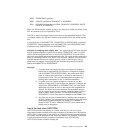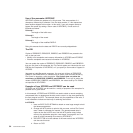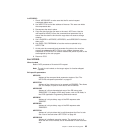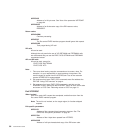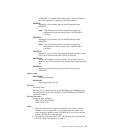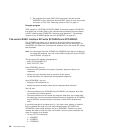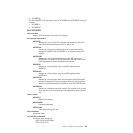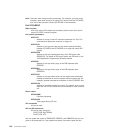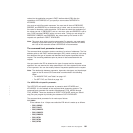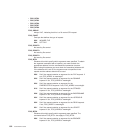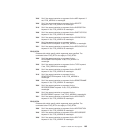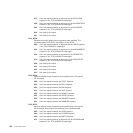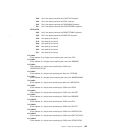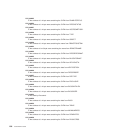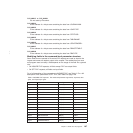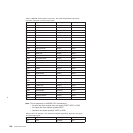values into the application program’s EXEC interface block (EIB) after the
completion of XFCAREQC or if you specify a return code of UERCBYP in
XFCAREQ.
You must set valid file control responses. You must set all three of EIBRCODE,
EIBRESP, and EIBRESP2 to a consistent set of values, such as would be set by
file control to describe a valid completion. CICS does not check the consistency of
the values you set. If EIBRCODE is set to a non-zero value and EIBRESP is set to
zero, CICS overrides EIBRESP with a non-zero value. To help you set values for
EIBRCODE, EIBRESP, and EIBRESP2, the values used by file control for SPI
requests are specified in DSECT DFHFAUED.
Note: Take care when using recursive commands. For example, you must avoid
entering a loop when issuing a file control SPI request from the XFCAREQ
exit. Use of the recursion counter UEPRECUR is recommended.
The command-level parameter structure
The command-level parameter structure consists of a series of addresses. The first
address points to the EXEC interface descriptor (EID), which consists of a bit string
that describes the type of request and identifies each keyword specified with the
request. The remaining addresses point to pieces of data associated with the
request.
You can examine the EID to determine the type of request and the keywords
specified. You can examine the other parameters in the list to determine the values
of the keywords. You can also modify values of keywords specified on the request.
Note: The relationship between arguments, keywords, data types, and input/output
types on the file control SPI commands is summarized in the following
tables:
v For INQUIRE FILE, see Table 5 on page 107.
v For SET FILE, see Table 6 on page 108.
The UEPCLPS exit-specific parameter:
The UEPCLPS exit-specific parameter is passed to both XFCAREQ and
XFCAREQC. It is the address of the command-level parameter structure. The
command-level parameter list contains 59 addresses, FCIS_ADDR0 through
FCIS_ADDR58. These are described in DSECT DFHFAUED, which you should
copy into your program by including the statement COPY DFHFAUED.
The command-level parameter list is made up as follows:
FCIS_ADDR0
is the address of an 13-byte area called the EID which is made up as follows:
v FCIS_GROUP
v FCIS_FUNCT
v FCIS_EIDOPT2
v FCIS_EIDOPT3
v FCIS_EIDOPT4
v FCIS_BITS1
v FCIS_BITS2
v FCIS_BITS3
Chapter 1. Global user exit programs 101
|
|
|
|
|



